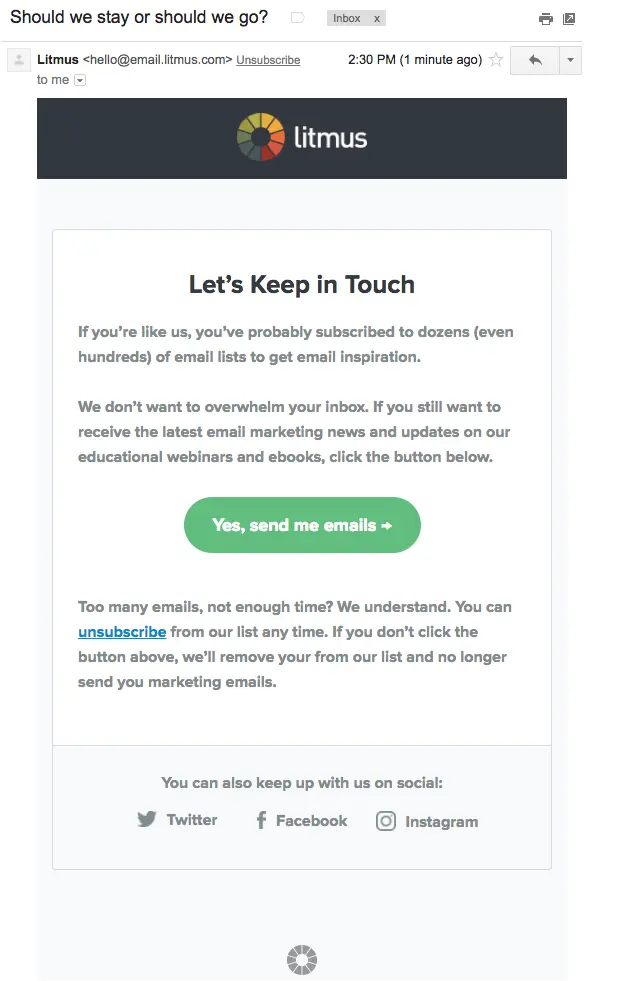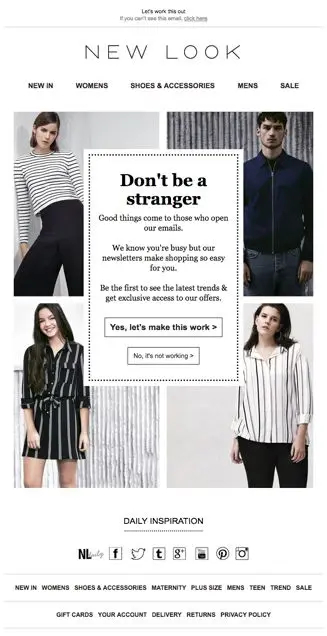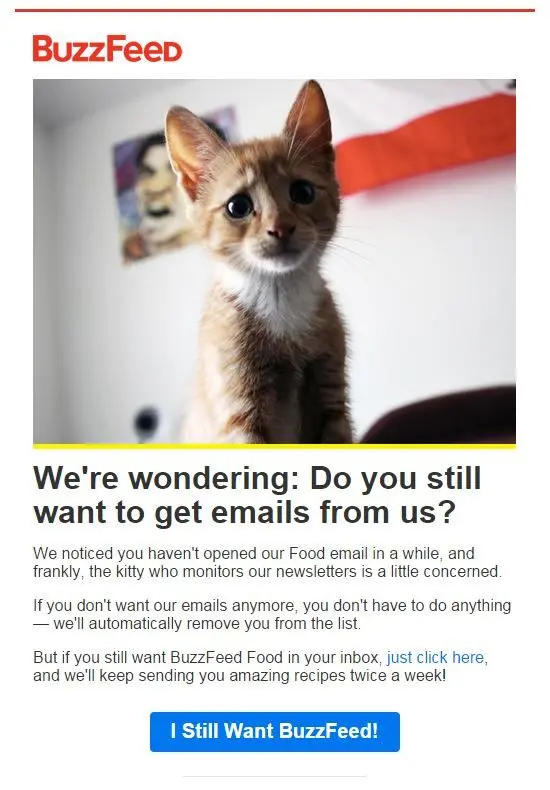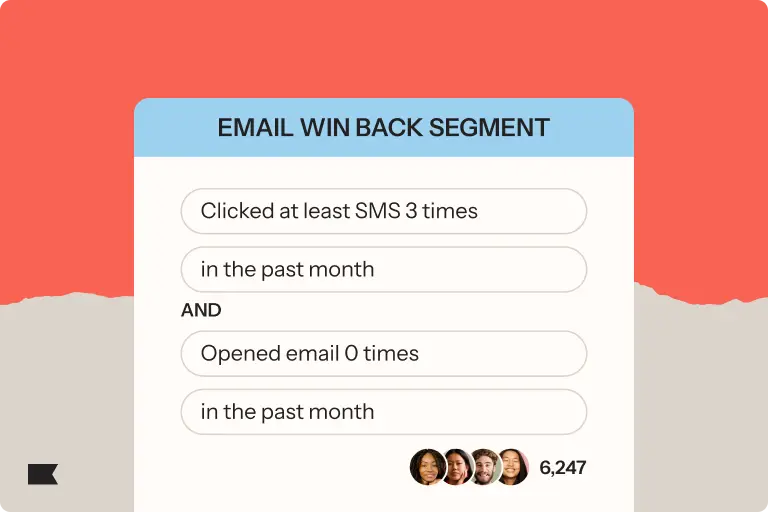Inactive email subscribers: sunset flows for better open rates

If your email marketing success has been steadily declining, you can a lot of times attribute it to a decrease in open rates.
This is mainly because of an increased number of subscribers who have either never opened any emails from you or haven’t done so in the past six plus months.
Now you’re left with a choice. You can go ahead and simply delete all the inactive email list subscribers and be done with it, or you can work to reactivate the inactive email subscribers at a later date.
First let’s define the term ‘sunsetted’ so that as you begin to create your email strategy you can create segments that help you clean your email list more effectively.
Sunsetting, for email marketing services is the deliberate termination or segmented phasing out of specific subscribers that may not be engaging with the brand or do not fall within the active category of an email marketing strategy.
Understanding that inactive subscribers are actually detrimental to an email marketing strategy, it becomes easier to create a separate segment of email subscribers that will improve open rates in the long run (though there will be an initial decline in the list size).
Create a sunset flow for inactive email subscribers
Typically in email marketing, a subscriber is considered inactive after six months of inactivity. Meaning that that person hasn’t opened (and/or clicked) your campaigns in six consecutive months.
Start by defining an inactive subscriber for your brand. Is an inactive subscriber someone who hasn’t opened or clicked or not done both in the last 12 months? Or is that from the last 18 months? Or maybe 6 months is the sweet spot?
Identify the timeframe of inactivity: A thing to note is that the timeframe is largely dependent on your campaign frequency. When you’re sending out monthly campaigns (one campaign per month), it’s safe to take action after six months or in other words, six unopened emails. When you’re sending more than one campaign per month, the time to take action can be shorter than that.
Whatever you decide is right for you, eventually you’ll end up with a number of subscribers who you consider inactive.
Create a sunset flow. Doing this gives inactive subscribers a last chance to re-engage with you and only after that final inactivity will you let go knowing that you really did try everything.
How to take action:
What follows are action steps for a fictional ecommerce merchant that sends out a monthly campaign (one campaign per month) and has decided that six months of inactivity is the limit for taking action. As not all subscribers are created equal, they have been divided into two segments based on their history with the merchant.
#1: Create a segment with list of customers that have never purchased a product
Scenario: These are subscribers who haven’t opened your campaigns for at least six months AND they have never purchased from you.
Their sunset flow consists of two emails. The first one is essentially a re-permission email that requires them to click a link in the email to confirm that they want to continue receiving emails. When that is ignored, it’s time for the final goodbye.
Alternatively, you can combine the two and send one final email:

Another example:

And one final one:

#2: Customer email segment for those that purchased over 12 months ago
Scenario: These are subscribers who haven’t opened your campaigns for at least six months BUT they have bought from you in the past. Because of this, they are “worth” putting more effort into re-engaging them.
A sunset flow for them consists of two parts: a re-engagement/win-back campaign to get them to buy again and a goodbye email similar to the one that was featured under segment #1.
A successful re-engagement campaign sends relevant content as an incentive for subscribers to interact with your brand again. That relevant content could be items similar to what that person has bought and/or browsed before or things like coupons and discounts on things that matter to that person. Personalization is key here.
You have to be careful here with buyers who buy from you only once or twice a year. They might be seasonal buyers meaning that they’ll only buy when the season is on. They might also only buy various holiday gifts and thus only buy once a year.
Just the fact that the last purchase was 6 months ago should not be enough to get into the sunset flow. Check further so as not to alienate your seasonal and holiday buyers.
When you really want to take things seriously, you should also note subscribers purchase history and design win-back offers based off of that. A client who has spent $10,000 with you is probably worth more than someone who bought a $12 teddy bear. Your win-back email offers should reflect that fact.

The key to email success is winning back inactive subscribers
Not all inactive subscribers are created equal. There some that are worth fighting for and some, who really shouldn’t get that much extra attention from you. The ones that should be terminated from your list will actually be bringing your email open rates down, so though it may reduce your list size, in the long run it makes your email strategy more effective and provides better CLTV rates.
By using actual sales data and designing win-back campaigns based off of that data you’re making sure that the people you’re sunsetting are really the ones that should be removed. You can use an email marketing platform to create these email campaigns and also segment the audience for better personalization.

Related content

Discover the best email marketing platform for ecommerce in 2026. Compare top tools for data, automation, personalization, and deliverability.

Learn how to use Klaviyo SMS, segmentation, and hybrid flows to re-engage lapsed email subscribers, boost deliverability, and drive higher retention.

Boost D2C email revenue from 12% to 30% with the Klaviyo playbook: high-converting pop-ups, a 5-email welcome series, smart filters, and optimized abandonment flows.